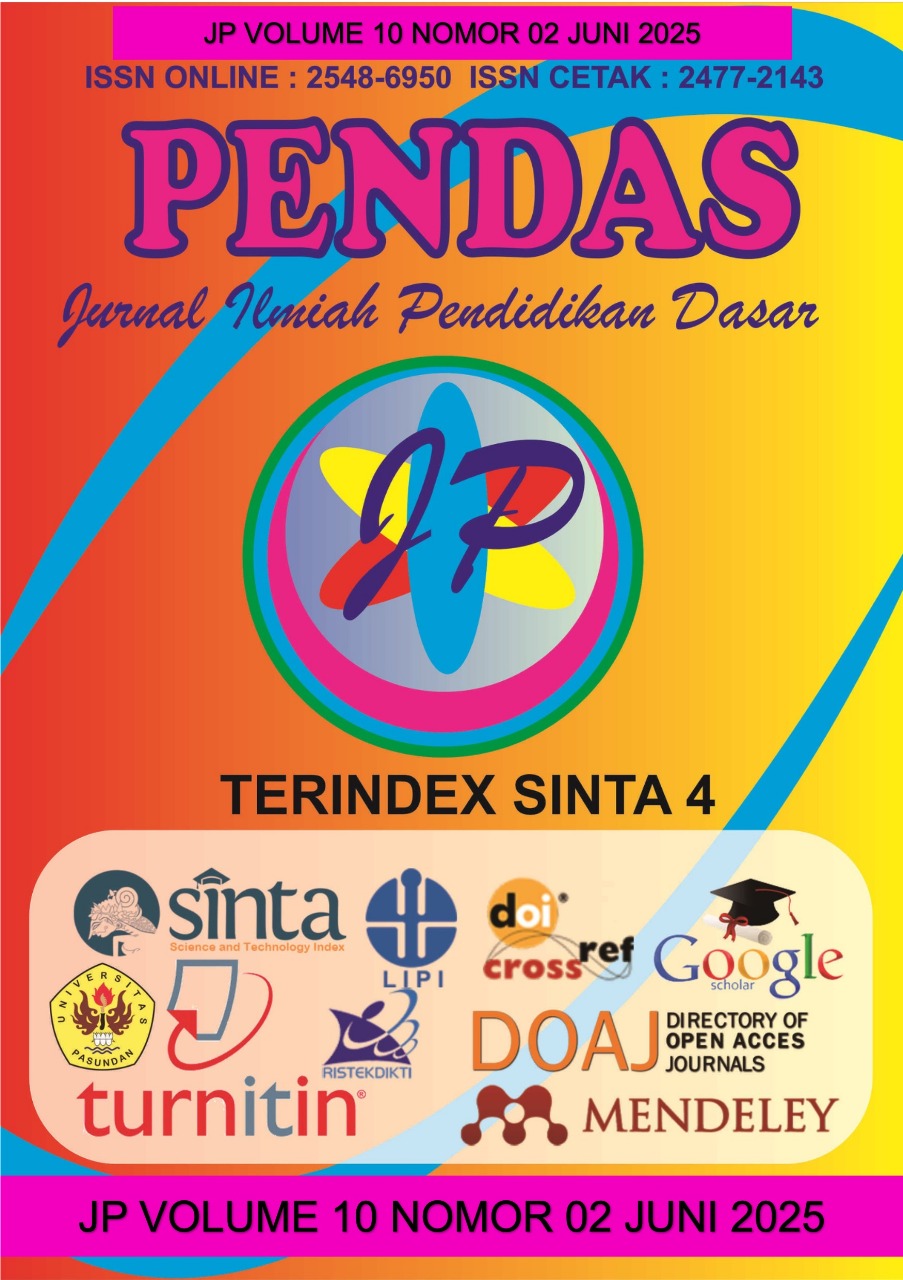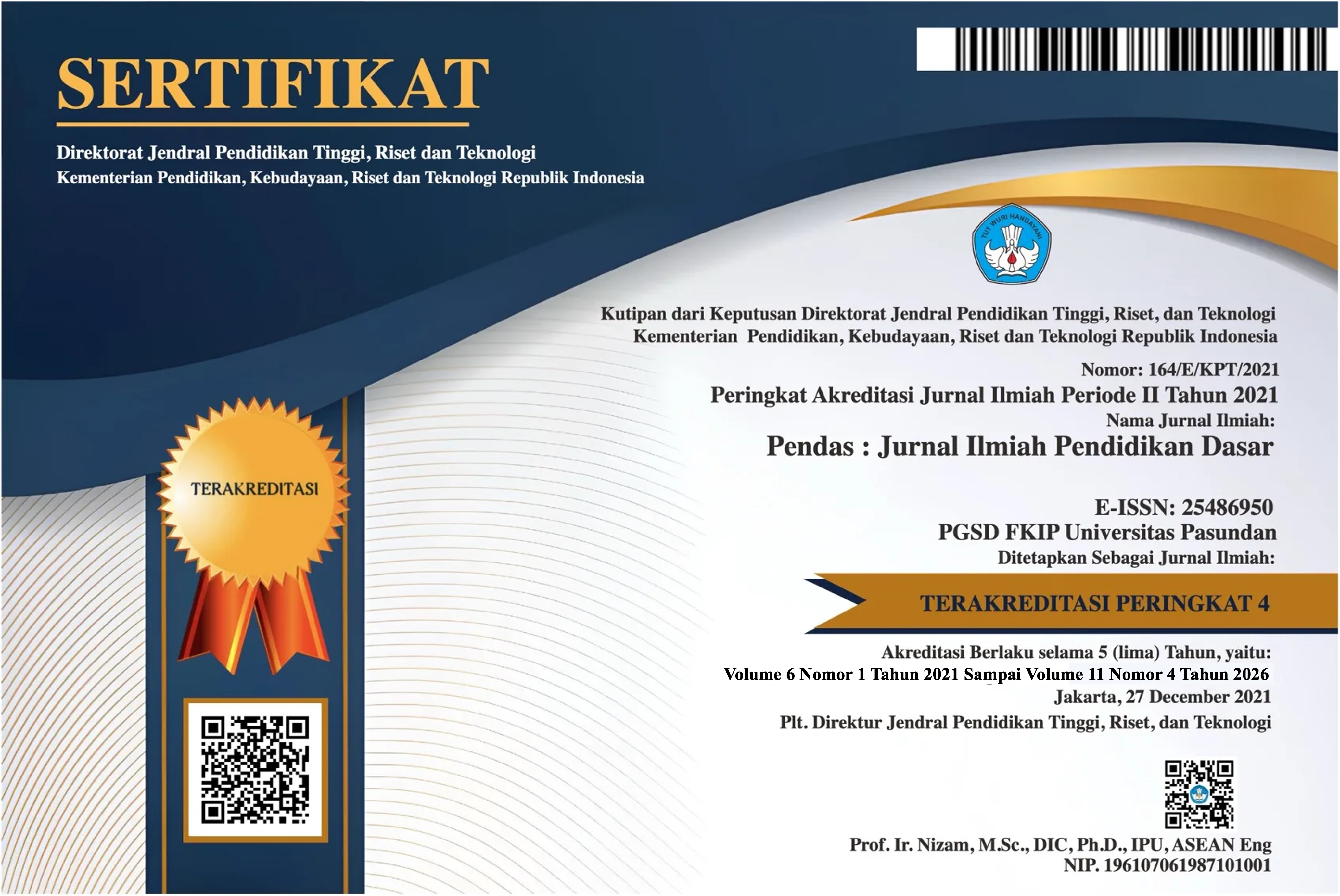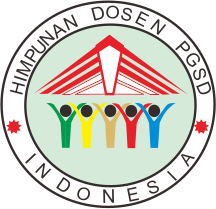PENGEMBANGAN BAHAN AJAR E-MODUL IPAS “CERFOSIS” FLIP PDF CORPORATE EDITION DALAM MENINGKATKAN PRESTASI BELAJAR SISWA KELAS IV SD MUHAMMADIYAH AMBARBINANGUN
DOI:
https://doi.org/10.23969/jp.v10i2.27579Keywords:
Teaching Materials, CERFOSIS E-module, Learning Achievement.Abstract
This research aims to improve low student learning achievement, which is attributed to the lack of engaging teaching materials in both face-to-face and independent learning processes. To address this issue, the researcher developed an interactive e-module containing materials, images, videos, and quizzes, hoping to enhance the learning achievement of fourth-grade students at SD Muhammadiyah Ambarbinangun in IPAS (Science, Social Studies, and Culture) subjects. This study is a research and development (R&D) project, utilizing the five-step ADDIE development model: 1) analyze, 2) design, 3) development, 4) implementation, and 5) evaluation. Data collection techniques included interviews, observations, questionnaires, and tests. Test data were analyzed using normality, homogeneity, and paired-sample t-tests. Questionnaire data were analyzed using a Likert scale. This research produced teaching materials in the form of the CERFOSIS E-module for ifourth-grade IPAS at SD Muhammadiyah Ambarbinangun, focusing on the "Photosynthesis" topic. This e-module incorporates materials, images, videos, and quizzes. Based on the validation by media experts, the e-module received an average score of 4.4, categorized as "very good." Validation by subject matter experts (fourth-grade teachers) yielded an average score of 5, also categorized as "very good." These validation results indicate that the teaching material product is suitable for student trials. The results of the extensive trial showed that student questionnaires yielded an average score of 4.8, categorized as "very good." Teacher response questionnaires resulted in an average score of 4.3, also categorized as "very good." Furthermore, student test scores increased from an average of 75.42 to 83.75. Therefore, the CERFOSIS E-module teaching material for fourth-grade IPAS at SD Muhammadiyah Ambarbinangun, on the "Photosynthesis" topic, developed by the researcher, is deemed suitable for use in the learning process.
Downloads
References
Aisyah, S., Noviyanti, E., & Triyanto. (2020). Bahan Ajara Sebagai Bagian daam Kajian Problematika Pembelajaran Bahasa. Salaka, 2(1), 62–65.
Arsyad A. (2014). Media Pembelajaran. 23–35.
Febrina, T., Leonard, L., & Astriani, M. M. (2020). Pengembangan Modul Elektronik Matematika Berbasis Web. JKPM (Jurnal Kajian Pendidikan Matematika), 6(1), 27. https://doi.org/10.30998/jkpm.v6i1.8141
Fransisca, S., & Putri, R. N. (2019). Pemanfaatan Teknologi RFID Untuk Pengelolaan Inventaris Sekolah Dengan Metode (R&D). Jurnal Mahasiswa Aplikasi Teknologi Komputer Dan Informasi, 1(1), 72–75.
Lastri, Y. (2023). Pengembangan Dan Pemanfaatan Bahan Ajar E-Modul Dalam Proses Pembelajaran. Jurnal Citra Pendidikan, 3(3), 1139–1146. https://doi.org/10.38048/jcp.v3i3.1914
Lubis, N. S., Deliyanti, Y., & Hutajulu, M. A. A. (2023). Analisis Uji Persyaratan Statistika Parametrik Terhadap Analisis Pertumbuhan Dan Kepadatan Penduduk. Jurnal Bakti Sosial, 2(2), 134–143.
Magdalena, I., Fauziah, S., Sari, P. W., & Berliana, N. (2020). Analisis Faktor Siswa Tidak Memperhatikan Penjelasan Guru. Jurnal Pendidikan Dan Ilmu Sosial, 2(2), 283–295. https://ejournal.stitpn.ac.id/index.php/nusantara
Magdalena, I., Sundari, T., Nurkamilah, S., Ayu Amalia, D., & Muhammadiyah Tangerang, U. (2020). Analisis Bahan Ajar. Jurnal Pendidikan Dan Ilmu Sosial, 2(2), 311–326. https://ejournal.stitpn.ac.id/index.php/nusantara
Muhayat, U., Wahyudi, W., Wibawanto, H., & Hardyanto, W. (2017). Pengembangan Media Edukatif Berbasis Augmented Reality untuk Desain Interior dan Eksterior. Innovative Journal of Curriculum and Educational Technology, 6(2), 39–48.
Sholikha, S. M., Farid, M. M., & Andriansyah, E. H. (2022). Penggunaan Modul Digital Dalam Meningkatkan Prestasi Belajar Siswa Program Percepatan Sks Kota Surabaya. Jurnal Ekonomi Pendidikan Dan Kewirausahaan, 10(1), 73–82. https://doi.org/10.26740/jepk.v10n1.p73-82
Downloads
Published
Issue
Section
License
Copyright (c) 2025 Pendas : Jurnal Ilmiah Pendidikan Dasar

This work is licensed under a Creative Commons Attribution 4.0 International License.



















